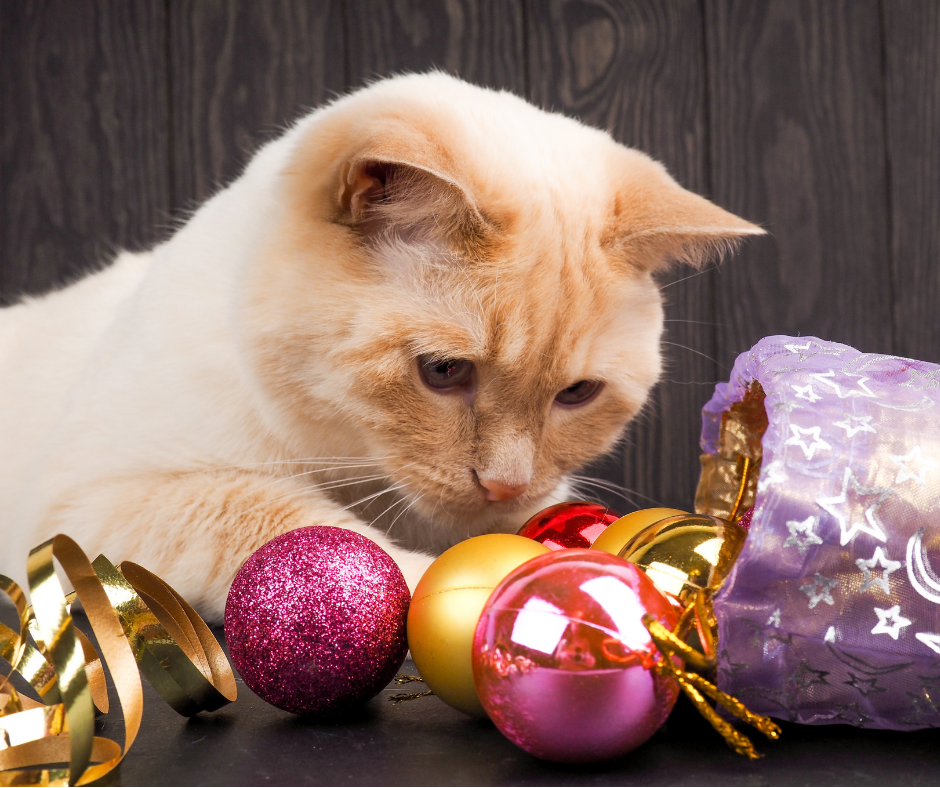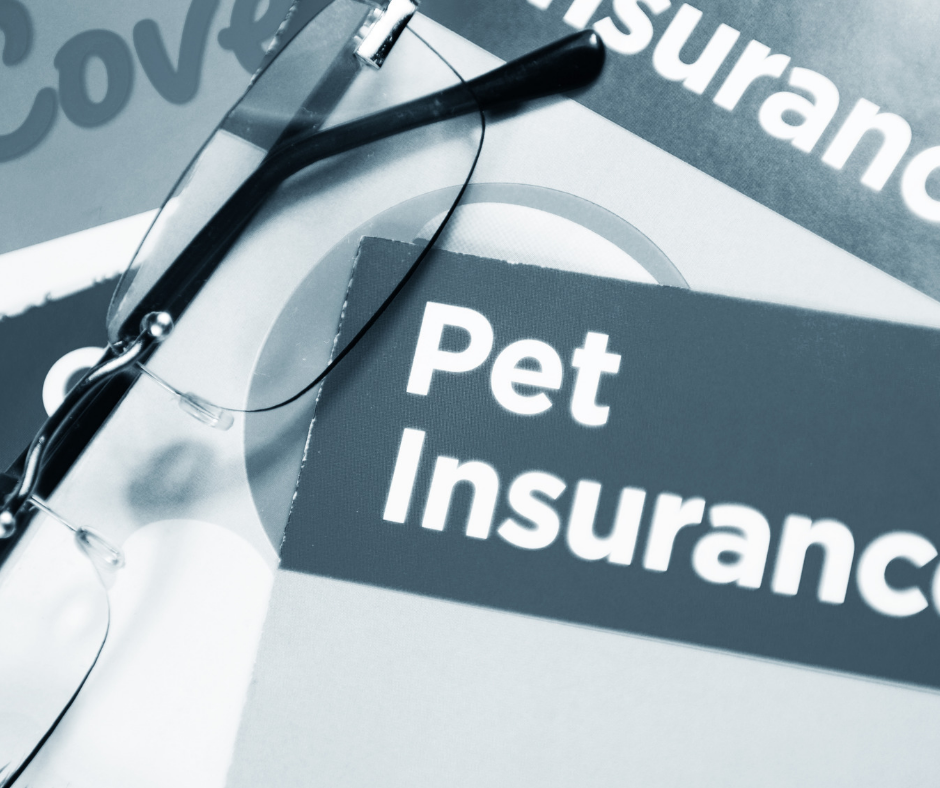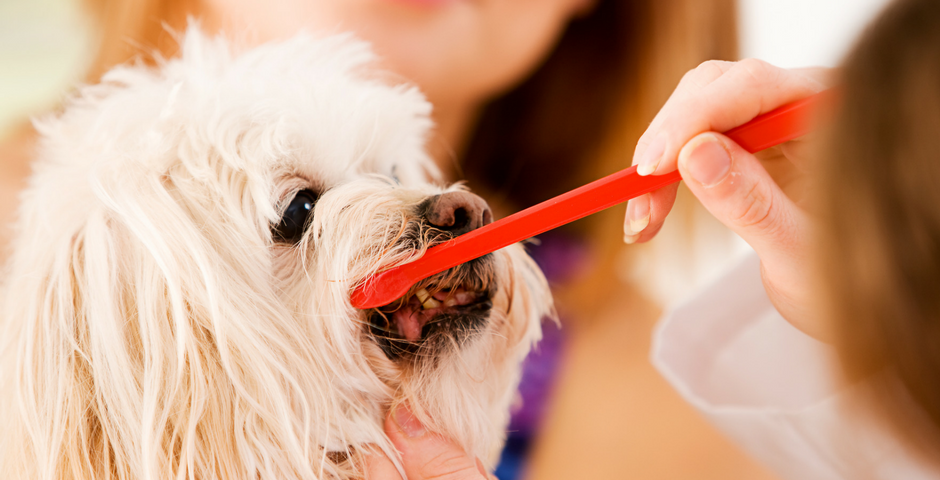
Cat Safety This Holiday Season
December 3, 2018
Should I Purchase Health Insurance for My Pet
February 5, 2019Dental health is an important, but often overlooked, aspect of pet well-being. Poor dental health is painful and can dramatically affect a pet’s quality of life. Furthermore, bacteria from the mouth can travel to distant organs such as the heart and kidneys to cause further trouble. Preventing dental problems with regular teeth cleanings, and treating painful teeth when they develop, can vastly improve a pet’s overall health.
When should I begin taking my pet for professional teeth cleaning?
Many of our pets will start to show signs of periodontal disease by the age of 3. Periodontal disease develops as the bacteria in plaque (the white sticky stuff that forms on teeth) causes gingivitis, which is inflammation of the gum tissue (think of bleeding gums when you brush or floss). Early gingivitis is reversible, but if periodontal disease is allowed to progress, there can be permanent loss of gum and bone tissue that surround the tooth roots.
* Note that small and flat-faced dog breeds are at greater risk of dental problems due to crowding of their teeth into smaller, less “wolf-like” mouths. Veterinary dentists have a saying—if your dog is smaller than a bread box, it should begin prophylactic dental cleanings very early in life (sometimes as young as 1-2 years of age).
Do cats need regular professional teeth cleaning too?
Yes! Cats are different creatures than dogs and often develop something called resorptive lesions. No one knows exactly why cats develop this problem. Resorptive lesions are painful areas that develop near the gum margin on the tooth itself.
When teeth are resorbing, the immune system eats away at the tooth until the tooth disappears and bone replaces the root of the tooth. Once bone fully replaces the root of the tooth and the crown (top part) of the tooth is gone, it is typically not painful. However, the process of the tooth getting to this point is extremely painful and can take years to a lifetime to achieve, so prevention or extraction are necessary.
What is involved in professional teeth cleaning for my pet?
Most of us don’t enjoy having someone poke and prod in our mouths, but we tolerate it because we understand the risks of not taking good care of our teeth and gums. Our beloved pets (no matter how intelligent they may be!) don’t have a similar ability to take the bigger picture into account. For that reason, a thorough pet dental cleaning, officially called a COHAT (Comprehensive Oral Health Assessment and Treatment), must be done under general anesthesia with appropriate pre and intra-operative precautionary measures.
At Muller Veterinary Hospital, we always perform pre-examination bloodwork to identify any issues, such as signs of cardiovascular disease, which would make going under anesthesia riskier. Depending upon your pet’s health profile, he or she may need additional tests prior to the COHAT. The goal of the pre and intra-operative measures is to make sure that the COHAT is as risk-free and comfortable as possible.
The “C” in COHAT stands for “comprehensive” for a reason – while your pet is under anesthesia, it is useful (and cost-effective!) to get as much accomplished as possible. Here is what a complete veterinary exam and treatment should include:
- Thorough oral exam – an important opportunity to identify tumors early
- Scale and polish teeth above and below the gumline. Polishing will smooth out the surface of the tooth, which gets roughened with scaling, to make it more difficult for future plaque and bacteria to adhere to the tooth.
- Check each tooth thoroughly for root exposure, gingival pockets, mobility, and fractures.
- X-ray any problem teeth to visualize the roots (the part of the tooth under the gums).*
After these steps are taken, the owner will receive a call to discuss the oral exam findings. If the teeth are healthy, the pet will be woken up. If there are problem teeth, these will be discussed with the owner and a treatment plan will be made. Future steps could include extended release antibiotic, tooth extraction, or referral to a veterinary dental specialist for more advanced procedures.
* Note: X-ray images must be taken in order for the exam to truly be thorough. Not all veterinary hospitals can perform dental X-rays. At Muller Veterinary Hospital, we have a high quality digital dental X-ray unit, which means we can develop images instantly, minimizing the amount of time your pet would remain under anesthesia.
Is brushing my pet’s teeth at home sufficient?
While getting in a routine of brushing your pet’s teeth at home is an important ingredient to dental health, it is not sufficient. Even if you are brushing your pet’s teeth DAILY (which is great!), he or she should be scheduled for regular cleaning and assessment by a trained veterinarian. Just like we all need to go to the dentist regularly in order to maintain healthy gums and teeth (and fix problems when they arise), our pets’ teeth and gums need regular professional attention in order to remain healthy.
So what does this all mean?
Key things you can do right now to ensure good dental (and overall!) health for your pet:
- If your dog or cat is approaching 3 years old or older, and has not yet had a comprehensive dental examination, schedule one soon.
- If you own a small or “flat-faced” (brachycephalic) breed, discuss when to schedule that initial exam with your veterinarian – 2 years of age or younger is common.
- Begin or renew your efforts to brush your pet’s teeth daily. If you need help learning how, you can schedule an appointment with us and we can walk you through the process. The website vohc.org also has a list of treats, supplements, and products that the board certified veterinary dentists have reviewed and given their seal of approval.
- Keep in mind that any chew toys or treats need to be soft enough to not break a tooth. A quick way to check this is to take your thumb nail and try to make an indentation on the treat with your thumb. If the treat does not “give” or you can’t make a mark on it (aside from kibble or dog cookie type treats) then it is too hard and a broken tooth could result. This means bully sticks, many nylabones, real meat bones, antlers, pig ears, hooves, ice cubes, etc., can break teeth necessitating extractions or root canals.
Proper dental care as we’ve outlined here will ultimately save you money and greatly improve your pet’s quality of life. If you have questions regarding your pet’s dental health, please give us a call to schedule an appointment with one of our veterinarians.

